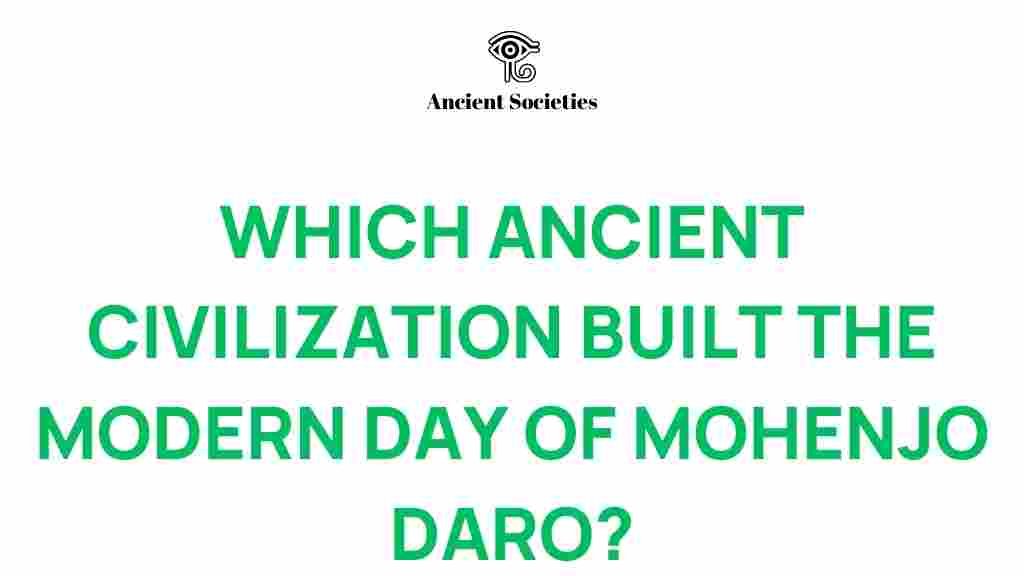Mohenjo Daro: Unveiling the Ancient Civilization
Mohenjo Daro, an iconic site of the ancient civilization of the Indus Valley, has intrigued archaeologists and historians since its discovery. As one of the world’s earliest urban settlements, it showcases the remarkable achievements of a sophisticated society that flourished over 4,500 years ago. This article delves into the rich history, culture, urban planning, and archaeological significance of Mohenjo Daro, providing insights into the life of its inhabitants and the legacy they left behind.
The Discovery of Mohenjo Daro
The site of Mohenjo Daro was excavated in the 1920s by archaeologists such as R.D. Banerji and John Marshall. Located in present-day Pakistan, it is one of the principal settlements of the Indus Valley Civilization (IVC), which thrived around 2500 BCE. The name “Mohenjo Daro” translates to “Mound of the Dead,” reflecting the site’s historical context.
The Indus Valley Civilization
The Indus Valley Civilization is one of the world’s earliest urban cultures, contemporaneous with ancient Egypt and Mesopotamia. It was characterized by:
- Advanced urban planning
- Innovative drainage systems
- Standardized weights and measurements
- Trade networks with surrounding regions
This civilization covered a vast area, including modern-day Pakistan and northwest India, with major cities like Harappa and Mohenjo Daro at its forefront.
Urban Planning and Architecture
Mohenjo Daro is renowned for its sophisticated urban planning. The city was laid out in an organized grid pattern, with streets intersecting at right angles. Key features include:
- Well-Designed Streets: The main streets were wide and paved, facilitating movement.
- Advanced Drainage Systems: Houses were equipped with bathrooms connected to a complex drainage system, which is a testament to the civilization’s engineering prowess.
- Public Structures: The Great Bath, a large public water tank, suggests the importance of ritual bathing in their culture.
This level of urban planning is indicative of a highly organized society with a significant understanding of infrastructure and public health.
Artifacts and Cultural Insights
The archaeological excavations at Mohenjo Daro have unearthed numerous artifacts that provide a glimpse into the daily lives and cultural practices of its inhabitants. Notable finds include:
- Seals: Carved stone seals featuring animal motifs and script suggest a form of writing and possibly trade.
- Pots and Tools: Terracotta pottery and tools indicate advanced craftsmanship and domestic life.
- Figurines: Small statues, often depicting women, reflect the artistic expression of the era.
The variety of artifacts found at Mohenjo Daro highlights the complexity of its society and its cultural expressions.
Society and Economy
The society of Mohenjo Daro was likely structured and hierarchical. The economy was primarily based on agriculture, trade, and craftsmanship. Key aspects of their society include:
- Agriculture: Evidence suggests that the inhabitants cultivated wheat, barley, and cotton, utilizing advanced farming techniques.
- Trade: There is substantial evidence of trade with Mesopotamia and other regions, indicating a vibrant economy.
- Craftsmanship: Artisans produced high-quality goods, including jewelry, textiles, and pottery, which were traded both locally and internationally.
This economic structure supported a thriving community with diverse occupations and social roles.
Archaeological Significance
Mohenjo Daro’s archaeological significance cannot be overstated. It provides critical insights into early urbanization and social organization. Key points of interest include:
- Preservation: The site’s well-preserved ruins offer a unique opportunity for studying ancient urban life.
- Research Opportunities: Continuous excavations and research attract scholars worldwide, contributing to our understanding of ancient civilizations.
- Cultural Heritage: Mohenjo Daro is a UNESCO World Heritage Site, recognized for its historical and cultural importance.
Through ongoing archaeological efforts, we continue to uncover the mysteries of this ancient civilization.
Challenges in Archaeology
Despite the wealth of information available, archaeologists face several challenges in studying Mohenjo Daro:
- Looting: The site has experienced looting, which has resulted in the loss of valuable artifacts.
- Climate Impact: Erosion and weathering threaten the preservation of the ruins.
- Interpretation: Understanding the social structure and language of the Indus Valley people remains a complex challenge.
Addressing these challenges is essential for preserving the legacy of Mohenjo Daro and the Indus Valley Civilization.
Conclusion
The legacy of Mohenjo Daro and the ancient civilization of the Indus Valley continues to captivate and inspire. Through its remarkable urban planning, advanced societal structure, and rich cultural artifacts, Mohenjo Daro stands as a testament to human ingenuity and adaptability. As we delve deeper into the archaeology of this ancient site, we gain a greater appreciation for the intricate tapestry of history that shaped our world.
For more insights into ancient civilizations, visit this resource. To explore the latest archaeological findings, check out this site.
Understanding Mohenjo Daro not only enriches our knowledge of history but also connects us to the shared human experience that transcends time.
This article is in the category Archaeology and created by AncientSocieties Team
